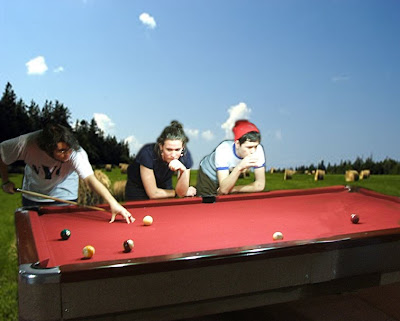One piece that I really enjoyed was Richard Serra's Torqued Ellipses. This piece was created from 1996-2000 and the piece consists of three large steel plates that seemed about 20 feet tall. These steel plates were worn and coppered so they took on a brown appearance and they were bent and curved into elliptical shapes. The elliptical shapes were curved in such a way so that they formed tunnels. I was able to walk through these tunnels to get to the middle of the elliptical, coppered steel. In the middle it is really quite amazing. My voice was resonating in such an interesting way and I liked how Serra was able to create such a great space simply with some curved steel. In the middle of his piece it seemed like a different world to me. Walking through the tunnels caused me some anxiety however, because I didn't know what was around the corner. I wondered where I was headed. It was such a relief when I got to the middle though. All of my anxiety was diminished. I really enjoyed Serra's piece because I was able to interact with it. It was an experience.
Richard Serra was born in San Francisco in 1939. He graduated from the University of California, Santa Barbara, in 1961, with a degree in English. He then studied art at Yale University. After receiving his M.F.A., Serra spent two years traveling in Europe before settling in 1966 in New York City. He lives and works in NYC to this day. Serra was involved in the Process Art Movement because much of his work is very process-based.




